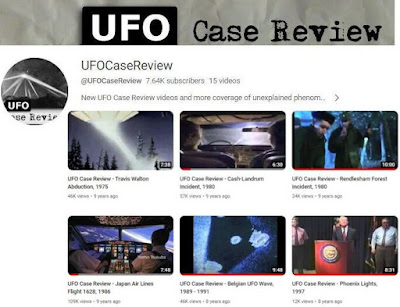 |
| Illustration from "The Strange Shapes Seen in the Sky," Life magazine Dec. 5, 1955 |
Sturgeon's Law is the adage stating, "ninety percent of everything is crap." It’s based on author Theodore Sturgeon responding to an insult of science fiction, emphasizing that we should focus on the positive and seek out the exceptional 10%.
There is an overwhelming amount of material on UFOs, from books to television shows, blogs, podcasts, YouTube channels, etc., and 90% of it is inaccurate or sensationalized. The good news is that there are reliable sources of information, archives of original case documents and classic UFO literature. Here are a few I personally recommend, the majority of which can be found online.
Documents, Chronologies, and Literature
Isaac Koi: UFOs and Rationality contains many valuable features:
- Free UFO Researcher Starter Pack - Tools to get started or improve locating UFO information and resources.
- UFO History Timeline - Chronological listing of UFO events with a list of resources on each item.
- Best UFO Cases, not necessarily the best, a survey of the most famous historical cases up to about 1990.
Additionally, see his blog, Isaac Koi - New Uploads for details on new additions to the digital collection housed by the AFU.
AFU: Archives for the Unexplained was founded in Sweden and has become an international repository for collections related to all phenomena studies, not only experiences of unidentified flying objects. In addition to their physical collection, there’s a vast digital collection of UFO literature and documents curated by Isaac Koi, see the AFU Digital Directory for the ever-expanding selection.
"The site now contains a complete set of issues of the International UFO Reporter, the Journal of UFO Studies, the CUFOS Associate Newsletter, and the CUFOS Bulletin, as well as NICAP’s UFO Investigator. It also features a UFO sighting report form, a comprehensive and updated UFO timeline, and basic information on the UFO phenomenon."
NICAP, the National Investigations Committee on Aerial Phenomena was a premier UFO organization from the mid-1950s into the early 1970s. It lives on today as the official NICAP website curated by Fran Ridge, supported by an international team of UFO experts. The site features many resources, perhaps the most valuable is the UFO Sighting Chronologies. Another great feature is the collection of twenty credible classic books on unidentified aerial phenomena. NICAP Online Books.
Expanding Frontiers Research was primarily born out of the ongoing research collaborations of Erica Lukes and Jack Brewer, and is "committed to collecting, preserving, and archiving historical information to share with the public. Our organization houses one of the most critical and unique UFO archives in the United States."
The Black Vault by John Greenewald, Jr. is “the largest privately run online repository of declassified government documents anywhere in the world.” For ease of navigation, here are some direct links to UFO-related departments of interest:
- Freedom of Information Act (FOIA) Documents released by the US. Government.
- Ufological History - A collection of rare UFO literature.
- From the Desks of Project Blue Book - PDFs of original Air Force files from the collection of Project Blue Book staffer Lt. Carmon Marano.
Project Blue Book - UFO Investigations, 1947-1969 is the collection of US government files on aerial phenomena from the Air Force. The National Archives houses the originals and were scanned by Fold3 and are available for public viewing.
UFO Books 101: Required Reading by Paul Dean was prepared by Australian researcher Paul Dean, his list of about twenty solid books on the phenomena.
Discussion Groups, Social Media, Blogs…
For those looking for a sincere attempt to present information via video, see the YouTube UFO Case Review channel and also the UFO Case Review playlist from Think Anomalous.
The UFO Updates List was curated by Errol Bruce-Knapp through the 1990s into 2013, a top resource for current information, ideas, and discussions on the phenomena available anywhere, and it’s preserved at the UFO UpDates Archives. After closing the list in 2013, Errol launched UFO UpDates Facebook Group. Errol passed away in 2016, but UFO Updates goes on. As with the original, it’s a curated forum, and while anyone may read the discussions, participation is by invitation only.
Håkan Blomqvist (co-founder, archivist and vice chairman of the AFU) has an excellent blog with a wealth of information for those interested in the more metaphysical side of things. Håkan Blomqvist´s Blog also includes a link to a free PDF of his book, Esotericism and UFO Research.
Ufology Research is the blog by veteran Canadian UFO researcher Chris Rutkowski. It provides a balanced look at the topic, and among the many excellent articles, he takes on the question, Where do I report my UFO sighting? and provides a look at the choices available.
There’s a virtual universe of UFO material out there, but also a lot of dead space. Investigate these sites to help you on your journey.
















.jpg)









